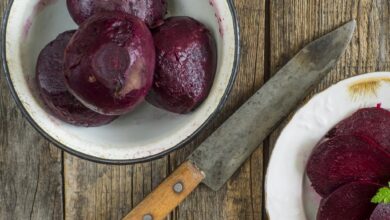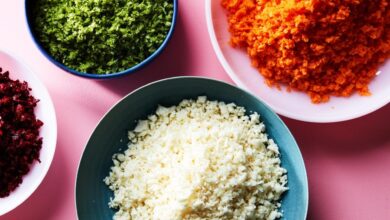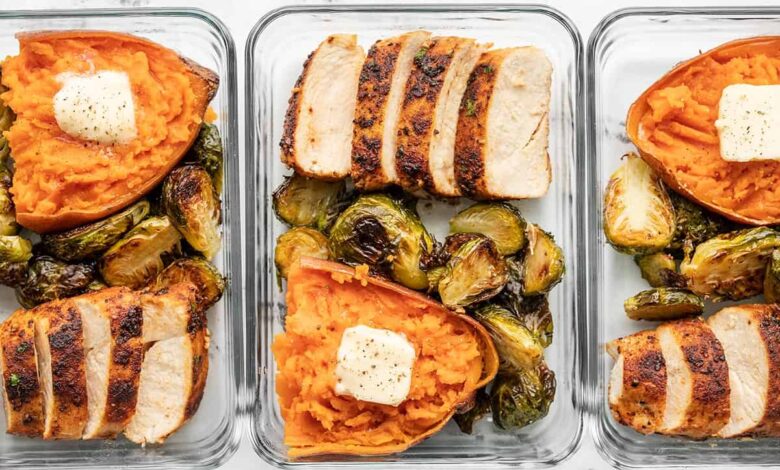
13 Budget Friendly Meal Prep Tips to Save Money and Time
Tired of constantly feeling like you’re throwing money away on takeout and overpriced grocery bills? 13 Budget Friendly Meal Prep Tips can help you take control of your finances and your health by teaching you how to stretch your grocery budget and create delicious, satisfying meals without breaking the bank.
From planning and preparation to smart grocery shopping and cooking techniques, this guide offers a comprehensive approach to meal prepping that will leave you feeling empowered and inspired in the kitchen.
Whether you’re a seasoned cook or a kitchen novice, these tips are designed to be accessible and adaptable to your individual needs and preferences. We’ll cover everything from identifying budget-friendly ingredients to utilizing pantry staples and maximizing the use of leftovers.
Get ready to discover the secrets to making meal prepping a breeze, saving money, and enjoying healthy, delicious meals that nourish both your body and your wallet.
Ingredient Selection
Ingredient selection plays a crucial role in budget-friendly meal prepping. By making smart choices, you can significantly reduce your grocery bill without compromising on flavor or nutrition.
Budget-Friendly Protein Sources
Budget-friendly protein sources are essential for creating affordable and satisfying meals. Here are some examples:
- Chicken:Chicken is a versatile protein that can be used in countless recipes. Look for bone-in chicken thighs, which are often more affordable than boneless, skinless breasts.
- Eggs:Eggs are a fantastic source of protein and are incredibly budget-friendly. You can use them in omelets, frittatas, scrambled eggs, or even baked goods.
- Beans and Lentils:These legumes are packed with protein and fiber, making them a great choice for budget-conscious meals. You can use them in soups, stews, salads, or as a base for vegetarian burgers.
- Tofu:Tofu is a plant-based protein source that is versatile and affordable. It can be used in stir-fries, curries, or as a meat substitute in many dishes.
Here are some recipes that utilize budget-friendly protein sources:
- One-Pan Chicken and Vegetables:Toss bone-in chicken thighs with your favorite vegetables (such as broccoli, carrots, and potatoes) and seasonings. Bake in the oven for a delicious and easy meal.
- Lentil Soup:Combine lentils, vegetables (such as onions, carrots, and celery), and broth for a hearty and filling soup.
- Tofu Scramble:Crumble tofu and sauté it with vegetables and seasonings for a protein-packed breakfast or lunch.
Seasonal Produce
Seasonal produce is not only delicious but also often more affordable than produce that is out of season. By using seasonal ingredients, you can reduce your grocery bill and enjoy fresh, flavorful meals.
- Farmers Markets:Farmers markets are a great place to find fresh, local produce at affordable prices.
- Grocery Store Sales:Keep an eye out for sales on seasonal produce at your local grocery store.
Here are some recipes that feature seasonal produce:
- Summer Salad with Grilled Corn and Tomatoes:Toss grilled corn, tomatoes, and fresh herbs with a light vinaigrette for a refreshing summer salad.
- Fall Harvest Soup with Butternut Squash and Apples:Combine butternut squash, apples, onions, and broth for a flavorful and comforting soup.
- Winter Citrus Salad with Oranges, Grapefruit, and Pomegranate:Combine citrus fruits with greens and a light dressing for a vibrant and healthy salad.
Pantry Staples and Frozen Ingredients
Stocking your pantry with staples and utilizing frozen ingredients can significantly reduce your grocery bill and help you create quick and easy meals.
- Pantry Staples:Essential pantry staples include rice, pasta, beans, lentils, canned tomatoes, spices, and dried herbs.
- Frozen Ingredients:Frozen vegetables, fruits, and meats can be just as nutritious as fresh options and are often more affordable.
Here are some tips for utilizing pantry staples and frozen ingredients:
- Make a Meal Plan:Planning your meals ahead of time can help you avoid impulse purchases and ensure you have the ingredients you need on hand.
- Use Leftovers:Don’t throw away leftovers! Use them to create new meals or freeze them for later.
- Get Creative:Experiment with different recipes and find ways to use pantry staples and frozen ingredients in creative ways.
Recipe Ideas
Once you have your ingredients, it’s time to start planning your meals! With a little creativity, you can easily whip up a variety of budget-friendly dishes that are both delicious and nutritious. Here are 10 recipe ideas that can be prepped in advance and enjoyed throughout the week.
Budget-Friendly Recipe Ideas
These recipes are designed to be both affordable and easy to prepare. They also offer a variety of options for different dietary needs and preferences.
| Meal Type | Recipe | Dietary Restrictions |
|---|---|---|
| Breakfast | Overnight Oats | Vegetarian, Vegan |
| Lunch | Tuna Salad Sandwiches | Vegetarian (without tuna) |
| Dinner | Lentil Soup | Vegetarian, Vegan |
| Breakfast | Scrambled Eggs with Veggies | Vegetarian |
| Lunch | Chicken Salad Wraps | None |
| Dinner | Pasta with Tomato Sauce | Vegetarian, Vegan (with plant-based pasta and sauce) |
| Breakfast | Smoothies | Vegetarian, Vegan |
| Lunch | Quinoa Salad | Vegetarian, Vegan |
| Dinner | Black Bean Burgers | Vegetarian, Vegan |
| Breakfast | Yogurt Parfaits | Vegetarian, Vegan (with plant-based yogurt) |
These are just a few examples of budget-friendly recipes that you can easily prep in advance. Don’t be afraid to experiment with different ingredients and flavors to find what you enjoy most. For example, you can use leftover cooked chicken or beans in place of tuna or lentils in the recipes above.
You can also add different vegetables, spices, or herbs to personalize your meals.
Planning your meals ahead of time is a great way to save money and make sure you’re eating healthy. But sometimes, it can feel like a chore. It’s easy to get stuck in a rut and end up eating the same things over and over again.
If you’re looking for some inspiration, check out 8 fun ways to avoid home workout boredom ! Just like working out, meal prep can be more fun when you mix things up. Try new recipes, experiment with different ingredients, and you’ll be surprised how much you enjoy it.
Portion Control: 13 Budget Friendly Meal Prep Tips
Portion control is a fundamental aspect of healthy and budget-friendly eating. It helps you consume the right amount of food, preventing overeating and unnecessary calorie intake. By managing portion sizes, you can save money by reducing food waste and avoid spending extra on unnecessary food.
Using Smaller Plates and Bowls
Smaller plates and bowls can help you visually perceive smaller portions as more substantial, tricking your brain into feeling satisfied with less food. This simple trick can significantly impact your overall calorie intake.
Using a smaller plate can help you feel full with less food.
- Choose smaller dinner plates (9-10 inches) instead of larger ones (12 inches).
- Opt for smaller bowls for soups, salads, and desserts.
- Use smaller spoons for eating, encouraging slower eating and better digestion.
Reducing Food Waste
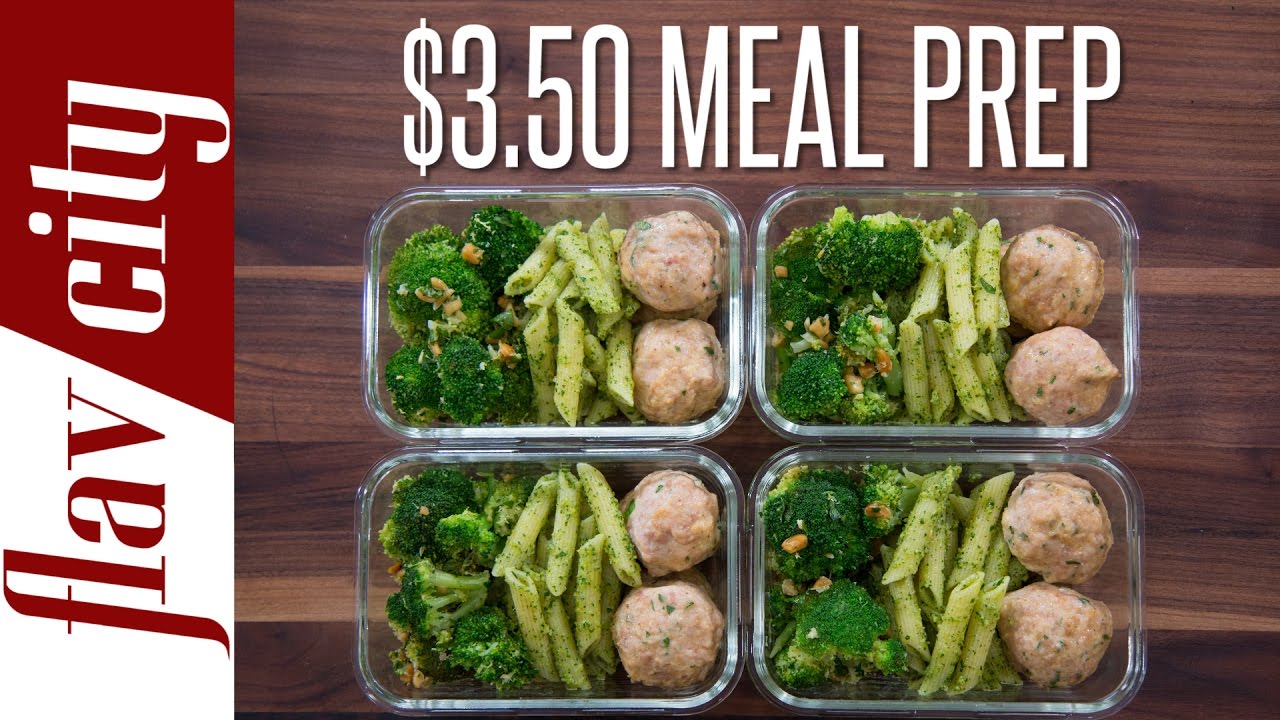
Food waste is a significant problem, both environmentally and financially. By reducing food waste, you can save money and contribute to a more sustainable lifestyle. This section explores strategies for minimizing food waste and maximizing your food budget.
Creative Leftover Recipes
Using leftovers creatively is a fantastic way to reduce food waste and add variety to your meals. Instead of tossing out extra ingredients, consider these ideas:
- Soup and Stew:Leftover cooked vegetables, meats, or grains can be transformed into hearty soups and stews. For example, leftover roasted chicken can be added to a chicken noodle soup, or leftover rice can be incorporated into a vegetable stew.
- Salads and Sandwiches:Leftover grilled chicken or fish can be used in salads or sandwiches. Add a sprinkle of cheese, a drizzle of dressing, and some fresh vegetables for a satisfying and budget-friendly meal.
- Pasta Dishes:Leftover cooked pasta can be tossed with vegetables, sauce, and cheese for a quick and easy meal. For example, leftover spaghetti can be mixed with a tomato sauce, leftover vegetables, and a sprinkle of Parmesan cheese for a delicious pasta bake.
- Breakfast Options:Leftover cooked grains, such as quinoa or rice, can be used in breakfast bowls or added to smoothies for a nutritious and filling start to your day.
- Fried Rice or Noodle Dishes:Leftover cooked rice or noodles can be combined with vegetables, meat, and eggs for a flavorful fried rice or noodle dish.
Proper Food Storage, 13 budget friendly meal prep tips
Proper food storage is crucial for extending the shelf life of your ingredients and preventing spoilage. Here are some tips:
- Refrigerator Organization:Store fruits and vegetables in the crisper drawers, and keep meats and poultry on the bottom shelf to prevent cross-contamination.
- First In, First Out (FIFO):Always use the oldest items in your refrigerator first. This helps ensure that nothing goes bad before you have a chance to use it.
- Proper Containers:Store food in airtight containers to prevent moisture loss and spoilage. This is especially important for leftovers and perishable items.
- Freezing:Freezing is a great way to extend the shelf life of many foods, such as fruits, vegetables, meats, and leftovers. When freezing, make sure to use freezer-safe containers or bags and label them with the date.
Eating Out Alternatives
Eating out can be a tempting and convenient option, but it can also be a major budget buster. Luckily, there are many delicious and affordable alternatives to dining out that can help you save money and stick to your meal prep goals.
Budget-Friendly Alternatives to Eating Out
Exploring budget-friendly alternatives to eating out can significantly contribute to your meal prepping success. These options not only save money but also offer opportunities to socialize and enjoy delicious home-cooked meals.
Meal prepping can be a lifesaver for your budget and your sanity. It’s a great way to save time and money, especially if you’re working from home and need to focus on your work. Speaking of working from home, check out this great article on 10 ways to stay sane when working from home ! Once you’ve got your sanity in check, you can get back to those budget-friendly meal prep tips, and start saving time and money on your meals.
- Potlucks: Potlucks are a fantastic way to share meals with friends and family while keeping costs down. Each person contributes a dish, ensuring a diverse and delicious spread without the burden of preparing an entire meal. This approach allows you to enjoy different cuisines and flavors while saving money.
- Meal Swaps: Meal swaps with friends are another excellent option. You can prepare a large batch of a particular dish and exchange it with a friend who has prepared something different. This allows you to enjoy a variety of meals without having to cook everything yourself.
It also encourages creativity and the exploration of new recipes.
Inexpensive and Healthy Snack Options
Snacking can be a challenge when trying to stick to a budget. However, with a little planning, you can easily prepare healthy and inexpensive snacks in advance.
- Fruit and Vegetable Platters: Prepare a colorful platter of fresh fruits and vegetables like apples, bananas, grapes, carrots, and celery sticks. These snacks are naturally sweet and packed with nutrients, keeping you satisfied and energized.
- Trail Mix: Combine your favorite nuts, seeds, and dried fruits for a quick and satisfying snack. Choose options like almonds, walnuts, pumpkin seeds, raisins, and cranberries for a healthy and energy-boosting snack.
- Hard-Boiled Eggs: Hard-boiled eggs are a convenient and protein-packed snack. They are also incredibly affordable and can be prepared in advance.
- Yogurt Parfaits: Layer Greek yogurt, granola, and your favorite fruits for a delicious and nutritious snack. This combination provides a balance of protein, fiber, and healthy fats, keeping you full and satisfied.
Benefits of Packing Your Lunch and Snacks
Packing your lunch and snacks offers several advantages beyond just saving money. It allows you to control the ingredients and portions, ensuring a healthy and balanced meal.
- Avoid Impulse Purchases: When you pack your own lunch, you eliminate the temptation of grabbing expensive and unhealthy options from vending machines or restaurants.
- Healthier Choices: By preparing your meals, you can control the ingredients and portion sizes, ensuring that you are eating healthy and nutritious food.
- Cost Savings: Packing your lunch and snacks is significantly cheaper than buying food from restaurants or convenience stores.
Utilizing Resources
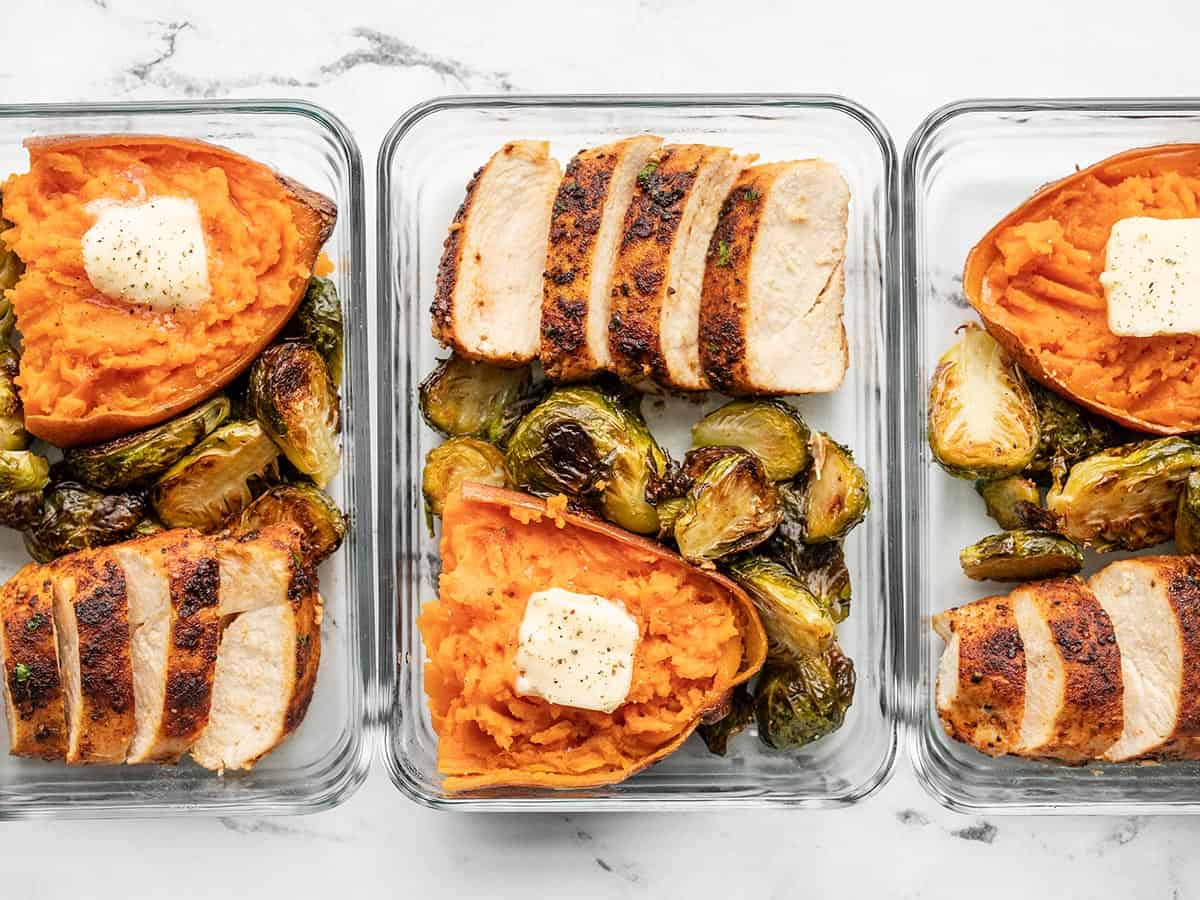
Leveraging available resources can significantly enhance your budget-friendly meal prep efforts. By tapping into free or low-cost workshops, online platforms, and community initiatives, you can gain valuable knowledge and access to affordable ingredients, making your meal prep journey more enjoyable and cost-effective.
Free or Low-Cost Cooking Classes and Workshops
Community centers, libraries, and local cooking schools often offer free or low-cost cooking classes and workshops. These programs provide an excellent opportunity to learn new culinary skills, explore different cuisines, and discover budget-friendly recipes.
My 13 budget-friendly meal prep tips are all about making healthy eating affordable and easy. One of my favorite strategies is to focus on whole grains like pasta, which can be a surprisingly versatile and budget-friendly base for meals.
But is pasta really healthy? You might be surprised to learn that pasta can be part of a balanced diet, especially when you choose whole wheat options. Check out this article to learn more about can pasta be healthy.
Once you’ve got your pasta basics down, you can start experimenting with different sauces and toppings to create endless meal prep possibilities!
- Check local community centers and libraries:Many community centers and libraries offer free or low-cost cooking classes and workshops for residents. These programs are often led by experienced chefs or culinary instructors and cover a range of topics, from basic cooking techniques to specialized cuisines.
- Look for free or discounted classes at culinary schools:Culinary schools often offer free or discounted classes to the public as a way to promote their programs and engage with the community. These classes can be a great way to learn from professional chefs and expand your culinary knowledge.
- Search for online cooking classes:Numerous online platforms offer free or low-cost cooking classes, allowing you to learn at your own pace and from the comfort of your home. Platforms like YouTube, Coursera, and Udemy provide a vast selection of cooking courses covering various cuisines and skill levels.
Websites and Apps for Budget-Friendly Meal Planning and Recipe Ideas
Numerous websites and apps are dedicated to providing budget-friendly meal planning and recipe ideas. These resources offer a wide range of options, from quick and easy recipes to more elaborate meals, all tailored to fit your budget and dietary preferences.
- Websites like Budget Bytes, The Kitchn, and Allrecipes:These websites feature a vast collection of budget-friendly recipes, meal planning tips, and grocery shopping guides. They often categorize recipes by dietary restrictions, cooking time, and cost, making it easy to find options that suit your needs.
- Apps like Mealime, Paprika, and Yummly:These apps offer personalized meal planning features, allowing you to create custom meal plans based on your budget, dietary preferences, and available ingredients. They also provide recipe suggestions, grocery lists, and even allow you to track your food expenses.
Community Gardens and Farmers Markets
Joining a community garden or frequenting farmers markets provides access to fresh, seasonal produce at significantly lower prices than grocery stores. This can be a game-changer for your budget-friendly meal prep, allowing you to incorporate more fruits and vegetables into your diet without breaking the bank.
- Community gardens:Many communities offer plots for residents to grow their own fruits and vegetables. This can be a rewarding and cost-effective way to supplement your grocery shopping and enjoy fresh, homegrown produce.
- Farmers markets:Farmers markets provide direct access to locally grown produce, often at lower prices than grocery stores. They also offer a chance to connect with local farmers and learn about the origin and seasonality of your food.
Healthy Eating Habits
Budget-friendly meal prepping is not just about saving money, it’s also about making healthier choices. A healthy diet is essential for maintaining a healthy weight, reducing the risk of chronic diseases, and having more energy.
Incorporating Whole Foods
Choosing whole foods over processed foods is a crucial step towards a healthier diet. Whole foods are minimally processed and retain their natural nutrients. They are typically rich in fiber, vitamins, and minerals, which contribute to overall well-being.
- Fruits and vegetables: They are naturally low in calories and high in fiber, vitamins, and minerals. Aim for at least five servings of fruits and vegetables per day.
- Whole grains: Whole grains, such as brown rice, quinoa, and oats, provide more fiber and nutrients than refined grains. Choose whole-grain bread, pasta, and cereals.
- Lean protein: Lean protein sources, such as chicken, fish, beans, and lentils, are essential for building and repairing tissues.
- Healthy fats: Unsaturated fats, found in avocados, nuts, and olive oil, are beneficial for heart health. Limit saturated and trans fats found in processed foods.
Staying Hydrated and Choosing Healthy Snacks
Staying hydrated is essential for overall health. Water is the best choice for hydration, but you can also include unsweetened tea and infused water.
- Drink water throughout the day: Aim for at least eight glasses of water daily.
- Choose healthy snacks: Instead of reaching for processed snacks, opt for fruits, vegetables, nuts, seeds, or yogurt.
The Role of Physical Activity
Physical activity is crucial for maintaining a healthy weight and improving overall health. It helps burn calories, strengthens muscles and bones, and reduces the risk of chronic diseases.
- Aim for at least 30 minutes of moderate-intensity exercise most days of the week.
- Find activities you enjoy: This will make it more likely that you’ll stick with it.
- Consider free or low-cost options: Walking, running, biking, swimming, and hiking are all great ways to get exercise without spending a lot of money.
Last Recap
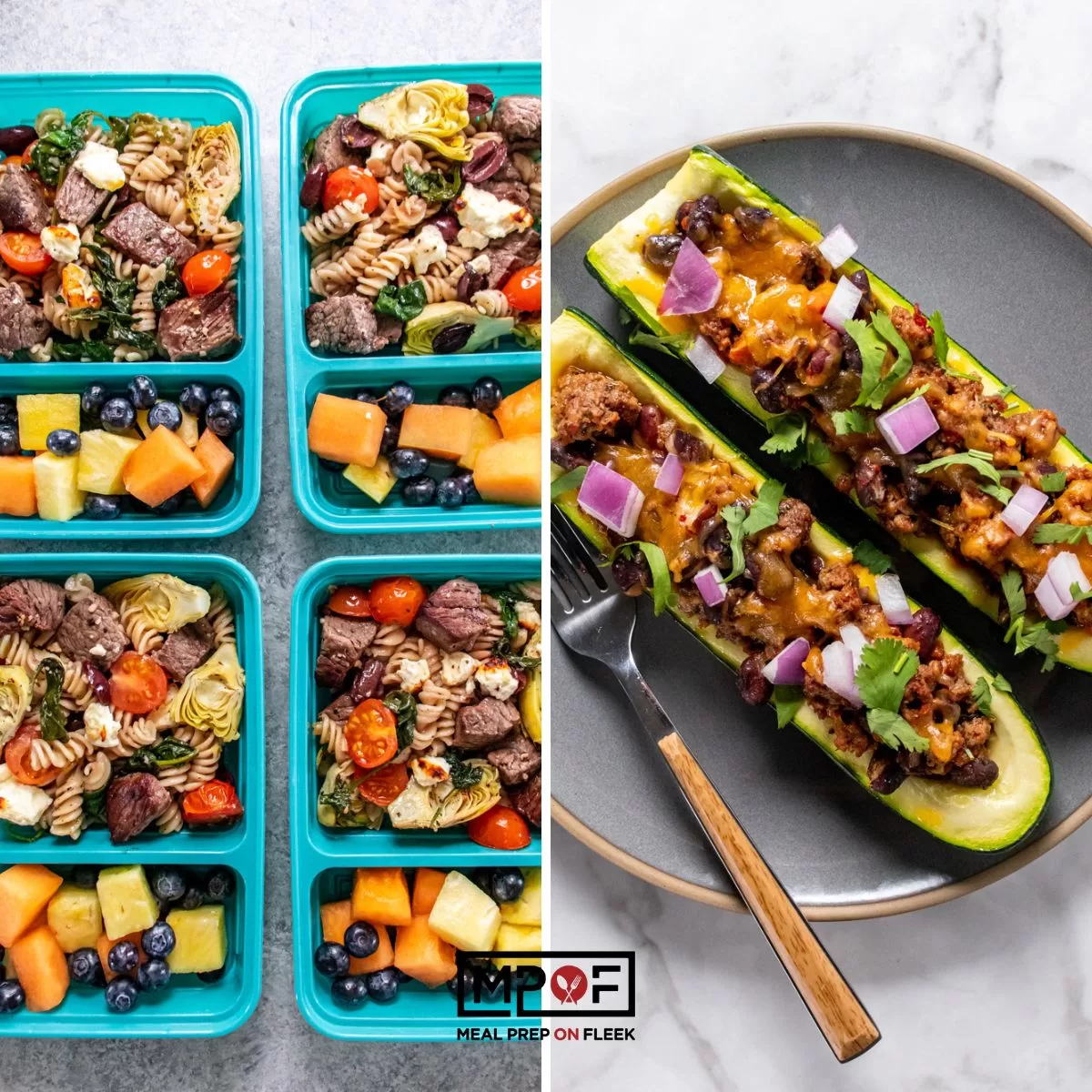
Meal prepping doesn’t have to be a chore – it can be a fun and rewarding experience that helps you save money, eat healthier, and take control of your time. By incorporating these 13 budget-friendly tips into your routine, you’ll be well on your way to transforming your relationship with food and achieving your culinary goals.
Remember, it’s all about finding what works best for you, embracing creativity in the kitchen, and enjoying the process of nourishing yourself with delicious and affordable meals.


